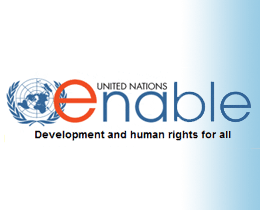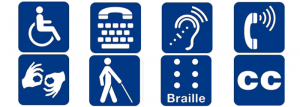
The International Day of Persons with Disabilities raises awareness and promotes advocacy for these people.
Although most awareness months and days are on a national scale, this December will feature a global effort to raise awareness and promote advocacy. December 3 is the United Nations International Day of Persons with Disabilities (IDPD). This is an effort to “promote the rights and well-being of persons with disabilities in all spheres of society and development.” Observed since 1992, IPDP focuses on a different worldwide theme. For 2017, the theme is “Transformation Towards a Sustainable and Resilient Society for All.”
A sustainable society is one that provides the full inclusion of all people, including those with disabilities, achieving their full participation in society. That also includes full access to digital and other technology. A resilient society is one that protects vulnerable people from economic, social, and environmental shocks (especially in light of the recent floods, droughts, earthquakes, and hurricanes). All this is part of the greater U.N. Agenda for Sustainable Development, pledging to “leave no one behind.”

The International Day of Persons with Disabilities raises awareness and promotes advocacy for these people.
The larger objective of the International Day of Persons with Disabilities is to raise awareness of all types of disabilities and dispel archaic ideas and stereotypes and stigma, as these are often “the greatest barrier to their full and equal participation in society and development on an equal basis with others.” Moreover, over the course of our lives, most of us will become disabled to some degree.
The International Day of Persons with Disabilities recognizes not only physical disabilities, but also mental, cognitive, and emotional disabilities. Already a vulnerable group, these people, often face discrimination in employment and other areas of daily living or, at the very least, confront considerable hurdles to accomplishing these tasks effectively.
Before There Was an International Day of Persons with Disabilities
Soon after the U.N. was formed, the General Assembly in 1948 produced the Universal Declaration of Human Rights. This document was the first global statement of human rights and dignity.

This U.S. commemorative stamp and envelope pay homage to the International Year of Disabled Persons, 1981.
1981 was the U.N. International Year of Disabled Persons. According to the U.N., the theme of was “full participation and equality,” defined as “the right of persons with disabilities to take part fully in the life and development of their societies, enjoy living conditions equal to those of other citizens, and have an equal share in improved conditions resulting from socioeconomic development.”

The United Nations Decade of Disabled Persons started two years later, in 1983, and ran through 1992. Governments and organizations worldwide were encouraged to undertake measures to improve the lives of people with disabilities. During the final year, U.N. General Assembly proclaimed December 3 as the International Day of Disabled Persons. In 2008, the name was changed to International Day of Persons with Disabilities.
The U.N. efforts address the current status of the U.N. Convention on the Rights of Persons with Disabilities, an international treaty comprising eight principles:
- Respect for inherent dignity, individual autonomy including the freedom to make one’s own choices, and independence of persons
- Non-discrimination
- Full and effective participation and inclusion in society
- Respect for difference and acceptance of persons with disabilities as part of human diversity and humanity
- Equality of opportunity
- Accessibility
- Equality between men and women;
- Respect for the evolving capacities of children with disabilities and respect for the right of children with disabilities to preserve their identities.
 Accessibility, inclusion, non-discrimination, and opportunity are all the very values we embrace in our mission of enhancing the lives of people with all disabilities.
Accessibility, inclusion, non-discrimination, and opportunity are all the very values we embrace in our mission of enhancing the lives of people with all disabilities.
Inclusion is a critical step in enhancing the lives of people with all disabilities, enabling them to fully participate in society.
Did You Know?
1 in 5
 Of the 7.3 billion people worldwide in 2015, some 1 billion live with a disability. In the U.S., about one in five, some 57 million, have a physical or mental disability.
Of the 7.3 billion people worldwide in 2015, some 1 billion live with a disability. In the U.S., about one in five, some 57 million, have a physical or mental disability.
1 in 4
One in four people worldwide will experience depression or another mental disability sometime during his or her lifetime, according to the World Health Organization, a UN agency.
8 years
In the U.S. and other Western nations, where life expectancy is 70 or more years, a person will spend on average about 8 years, or 11.5 percent of his or her life span, living with a disability.

International Day of Persons with Disabilities


